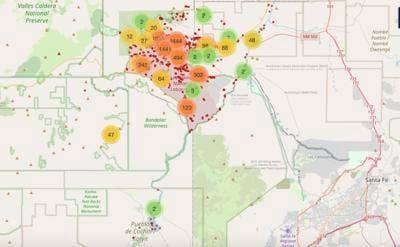“[NukeWatch] argued [their] plutonium migration map provides “compelling evidence of the need for a comprehensive cleanup” at the lab. The Department of Energy instead has proposed a plan to “cap and cover” 190,000 cubic yards of waste in unlined pits and trenches, at an estimated cost of $12 million.
Many local organizations and community leaders, including the Santa Fe County Commission, have opposed the plan, and the New Mexico Environment Department issued a draft order in September calling for a full cleanup — at a cost of about $800 million.”
, The Santa Fe New Mexican | santafenewmexican.com
Trace amounts of plutonium from decades of weapons work at Los Alamos National Laboratory have contaminated the Rio Grande at least as far as Cochiti Lake and could be in the regional aquifer that serves a large population of New Mexicans, a nuclear watchdog says.
“That’s been long known,” Nuclear Watch New Mexico Director Jay Coghlan said in a virtual briefing Thursday morning, when the organization unveiled a map of plutonium migration it said was created with LANL’s own data.
“Nevertheless, it’s not generally known by the New Mexican public,” Coghlan said. “What is ‘new news’ is publicly calling that out.”
Nuclear Watch used what it called the lab’s publicly accessible but cumbersome environmental database, Intellus New Mexico, to map 58,100 spots where the lab collected samples between 1992 and 2023, including 17,483 labeled as plutonium “detects.” The interactive map shows the date each sample was collected and the level of plutonium detected, with two “detects” cited in Cochiti Lake, dozens in the Rio Grande east of Los Alamos and thousands around the lab.

